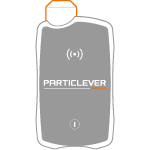Nanomaterials manufacturing


Nanomaterials manufacturing facilities may be of very different sizes, from the pilot at a start-up to multi-ton production in established companies. Whatever the case, control over the prevention strategy is key to industrial performance and business growth.
Verifying exposure levels is essential in order to tell whether the protective measures are working. These exposure levels will be compared to the recommended limit values, taking into account the level of nanomaterial hazard. The results will enable preventive technicians and employers to tell whether any corrections are needed.
Given the prevention challenges for this sort of business, periodic measuring has proven necessary. PARTICLEVER technologies also make it possible to achieve the highest level of safety strategy by continuously measuring exposure in critical operations.
Key questions
Given the latest knowledge about the new dangers that nanomaterials may represent, whether a substance contains nanoparticles should be taken into account even if this has been the case for a long time. As things stand, there is not necessarily any need to radically change safety practices. However, in such a situation, standard target for dust exposure limit values is too high.
The important thing to do is to take stock and figure out how much action should be taken to manage the change in risk. To decide the right level of action, accurate knowledge of exposure is therefore crucial.
Taking a new nanomaterial into the pilot production phase is a key moment in a project’s life, particularly from the perspective of health and safety. At this stage, the corresponding prevention strategy must incorporate an industrial reality, which might prevent exposure from being totally absent. When this happens, the choice becomes a compromise between controlling emissions and the hazards associated with the substances. When pilot production is in place, verifying the achievement of and compliance with the set targets is a major step in understanding future mass production constraints.



